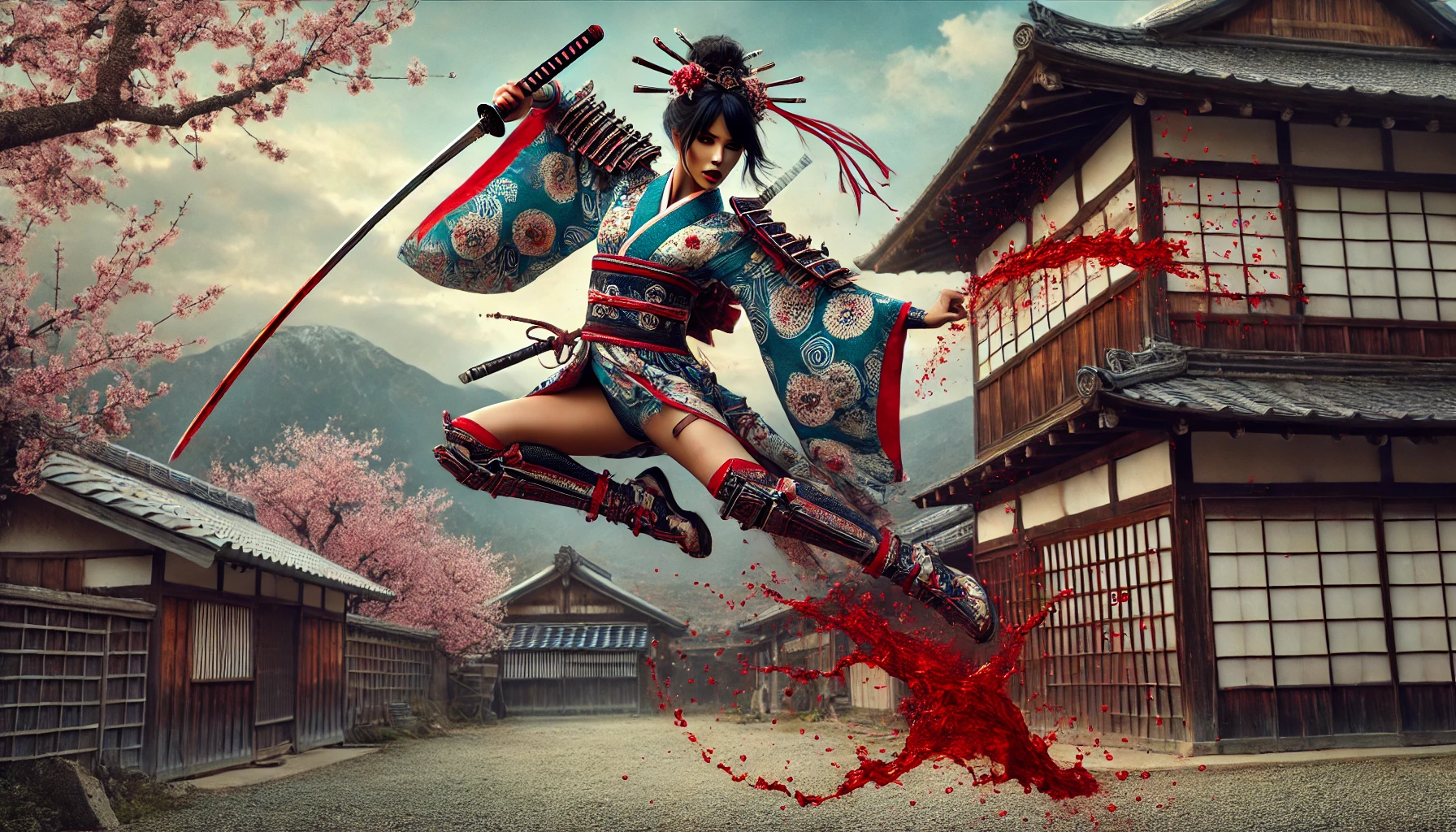When we think of samurai, the image of a fierce, armored male warrior comes to mind.
However, history tells us that the Female Samurai, known as Onna-Bugeisha, were equally vital to the story of feudal Japan.
These women were warriors, educators, and protectors who played pivotal roles in the survival and prosperity of their families and clans.
Their legacy, often overshadowed by their male counterparts, deserves recognition for the courage, discipline, and dedication they brought to their duties.
This article explores the fascinating world of the Onna-Bugeisha, examining their origins, roles, and lasting impact on Japanese culture.
Female Samurai
The Origins of Female Samurai
The tradition of Female Samurai can be traced back to the Heian period (794–1185), a time when Japan’s political and military landscape was beginning to take shape.
While the samurai class was primarily male-dominated, women from samurai families were often trained in martial arts and combat.
Why Were Women Trained as Warriors?
In feudal Japan, life was unpredictable, with constant threats from rival clans, bandits, and invasions.
Women, especially those from the samurai class, were expected to defend their homes and families in the absence of male warriors.
Training in weapons like the naginata (a type of polearm) and the katana (a Japanese sword) was essential for survival.
Key Figures in Early History
Several women emerged as legendary Female Samurai during Japan’s tumultuous periods:
- Tomoe Gozen: A celebrated warrior from the late Heian period, Tomoe Gozen served under Minamoto no Yoshinaka during the Genpei War (1180–1185). Known for her beauty and unmatched skill in battle, she is often depicted as the epitome of the Onna-Bugeisha spirit.
- Empress Jingu: Although her status as a Female Samurai is debated, Empress Jingu is often portrayed as a warrior empress who led an invasion of Korea around the 3rd century AD. Her story has inspired generations of women in Japan.
Roles and Responsibilities of Female Samurai
The roles of Female Samurai went far beyond wielding weapons.
They were integral to their households and communities, fulfilling responsibilities that required strength, intelligence, and moral fortitude.
1. Combat and Defense
Female Samurai were trained to protect their homes and families, particularly during times of war.
They specialized in using the naginata, which was ideal for defense due to its long reach.
Women were also skilled in the use of bows and arrows.
- During the Sengoku period (1467–1615), a time of constant conflict, Female Samurai often led defensive efforts in besieged castles.
- Nakano Takeko, a renowned Onna-Bugeisha, famously led a group of female fighters during the Boshin War (1868–1869). Her bravery in the Battle of Aizu remains a powerful symbol of women’s martial prowess.
2. Educators and Moral Guides
Women of the samurai class were not only warriors but also educators.
They were responsible for instilling the principles of bushido (the way of the warrior) in their children.
These principles included loyalty, honor, and self-discipline.
- Female Samurai taught their sons the skills and values needed to become successful samurai.
- They also educated daughters, ensuring that they, too, were prepared for their roles as protectors and moral anchors.
3. Leaders and Administrators
In times of crisis, Female Samurai often stepped into leadership roles.
They managed estates, negotiated alliances, and even commanded troops when necessary.
This responsibility highlighted their adaptability and strategic acumen.
The Decline of Female Samurai
The role of the Female Samurai began to diminish during the Edo period (1603–1867), as Japan entered a more peaceful era under the Tokugawa shogunate.
The emphasis on martial training for women waned, and their roles shifted toward domestic responsibilities.
Factors Leading to Their Decline
- Peaceful Times: With fewer wars, the need for women warriors decreased.
- Cultural Shifts: Confucian ideals, which emphasized women’s roles as wives and mothers, became more influential during this period.
- Samurai Decline: The Meiji Restoration (1868) marked the end of the samurai class, further eroding the legacy of the Onna-Bugeisha.
Legacy of the Female Samurai
Despite their decline, the legacy of the Female Samurai endures in Japanese culture and history.
Their contributions serve as a testament to the strength and resilience of women throughout history.
Cultural Representations
The stories of Onna-Bugeisha are celebrated in literature, art, and modern media:
- Literature: Historical accounts and fictionalized stories of Female Samurai continue to inspire readers worldwide.
- Film and Television: Movies like The Last Samurai and series such as Samurai Warriors have brought the tales of Onna-Bugeisha to a global audience.
- Martial Arts: Modern practitioners of naginata-do (the art of the naginata) honor the techniques and spirit of the Female Samurai.
Lessons for Modern Society
The Female Samurai challenge stereotypes about gender roles in historical contexts.
They remind us that women have always played active and vital roles in shaping societies.
Their courage and dedication continue to inspire movements for gender equality and empowerment.
Conclusion
The Female Samurai, or Onna-Bugeisha, were far more than historical anomalies; they were warriors, educators, and leaders who contributed significantly to Japan’s feudal era.
Figures like Tomoe Gozen and Nakano Takeko exemplify the strength and determination of these remarkable women.
Although their roles diminished over time, their spirit remains a powerful symbol of resilience and honor.
As we reflect on the legacy of the Female Samurai, we are reminded of the timeless values they upheld: courage, loyalty, and the unyielding pursuit of justice.
Their stories deserve to be told and retold, ensuring that their contributions to history are never forgotten.
The Female Samurai were not just warriors of their time but icons of strength and empowerment for all generations.
You might like this: Fall of the Samurai
